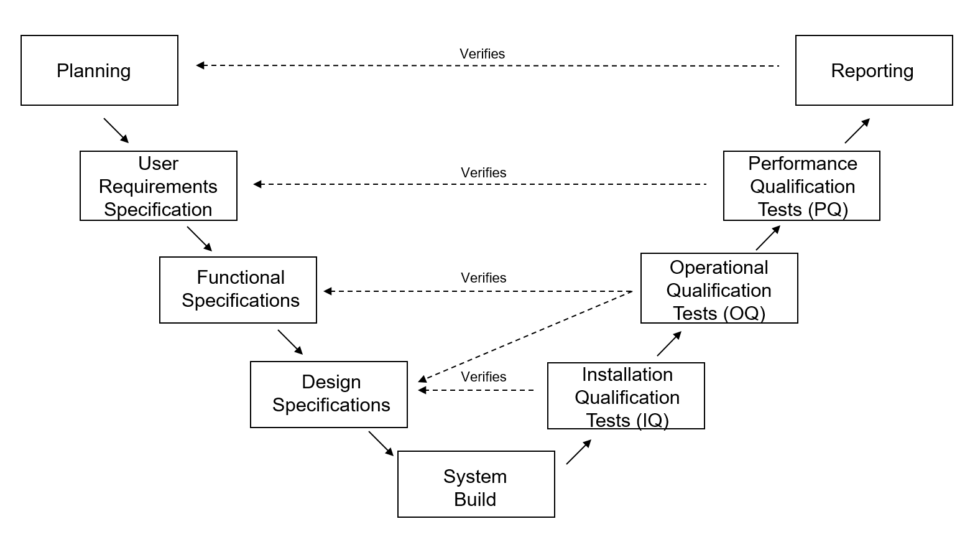Computerized System Validation (CSV)
CSV is the Process of Establishing the file Evidence which offers a high diploma warranty that the unique procedure will Consistency Produce a product that meets its predefined specification and nice attributes.
(usually referred to as “Computer Systems Validation”) is the process of testing/validating/qualifying a regulated computerized system to ensure that it does exactly what it is designed to do in a Constant and reproducible method that is as secure, stable, and dependable as paper information. This is extensively used in the Pharmaceutical, Life Sciences, and Biotech industries and is a cousin of Software Testing but with a greater formal and documented approach. The validation system begins with the device proposal/necessities definition and keeps till system retirement and retention of the e-records primarily based on regulatory rules.
Computer System Validation (CSV) Roles and Responsibility
Approve Validation Plan
Review CSCV (configuration specification configuration verification) document
Approve Validation Summary Report and Production Summary Report
Coach the Project crew on CSV
Approve comment, defect, deviation shape, and amendments
Validation Module (V-module)
How to do Computer System Validation the use of the conventional “V Diagram”
Now which you understand the definition of computer device validation, we will discuss one kind of method used for validation projects. The conventional “V Diagram” turned into popularized by way of enterprise companies which includes ISPE through GAMP Guides.
Here is a picture of the model:

Validation sports observe the diagram starting on the top left (Planning), proceeding down the V-form to System Build and then back to the top proper, and ending at Reporting.
Let’s damage down every component a touch bit further, starting with Planning.
Validation Plan
The Validation Plan defines what is going to be demonstrated and the approach you’ll use. It also defines roles and duties along with the maximum important part, the Acceptance Criteria.
User Requirements Specification (URS)
The User Requirements Specification describes what the user wishes from the software program and the way they may use it. It additionally carries any critical constraints including regulations, protection requirements, operational necessities, etc.
For example, right here’s a listing of a few User Requirements that might be wanted for a lab system.
The system should track the schooling of lab analysts on lab strategies/techniques
The system must song samples coming into the lab
The system ought to mechanically assign lab analysts to check samples based totally on availability and education
The system needs to ship sample trying out bypass/fail effects to the ERP
System has to follow 21 CFR eleven
Functional Specifications (FS)
The Functional Specification document describes how the software desires to paintings and appearance to fulfill the user’s needs. The report may include descriptions of how precise monitors and reports have to look, or describe facts that desire to be captured.
The Functional Requirements can also consist of good judgment and calculations together with how it will comply with regulatory necessities. For example, the Part 11 compliance necessities would possibly element how passwords or the audit trail need to work.
Design Specifications (DS)
The Design Specification report is one that consists of all of the technical factors of the software or systems. This includes:
Database Design – record systems, field definitions, statistics flow diagrams, entity dating diagrams
Logic/Process Design – pseudocode for logic and calculations
Security Design – virus protection, hacker protection
Interface Design – what statistics will move from one device to another; how and the way often, and failure coping with
Architecture Design – required hardware, operating systems, utility versions, middleware, etc.
System Build
In the System Build step, you increase or buy your software and then configure it to the preceding specification files. This step consists of unit trying out and integration checking out.
Installation Qualification Tests (IQ) Tests
The Installation Qualification exams offer confirmation that the software or system is hooked up and set up in line with the Design Specification. Usually, the software is first installed in a check or validation surroundings, however, there may be exceptions in situations that include production.
Installation Qualification Tests (IQ) Tests
The Installation Qualification checks offer affirmation that the software program or device is installed and set up consistent with the Design Specification. Usually, the software is first set up in a test or validation surroundings, but there may be exceptions in situations along with manufacturing.
Operational Qualification (OQ) Tests
Operational Qualification checking out is frequently referred to as Functional Testing or System Testing. OQ exams affirm that all functionality described in the Functional Specification is present and working successfully and that there aren’t any bugs. OQ assessments can also consist of affirmation of any design elements now not tested in the course of IQ, together with configuration, are operating as specified.
Performance Qualification (PQ) Tests
Performance Qualification testing is frequently known as User Acceptance checking out. PQ trying out confirms that the software will meet the customers’ desires and is appropriate for his or her intended use, as defined in the User Requirements Specification. Testing can follow Use Cases, SOPs, consumer-described situations, and so on. For easy software like reviews or spreadsheets, OQ and PQ testing are frequently blended.
Reporting
The final step in this validation technique is to put in writing the Validation Report, often called the Validation Summary or System Certification. This report affords confirmation that all activities targeted in the validation plan have been finished. The Validation Report summarizes the testing consequences and offers confirmation that every one acceptance criteria have been met and the software program is prepared for deployment.

Leave a Comment